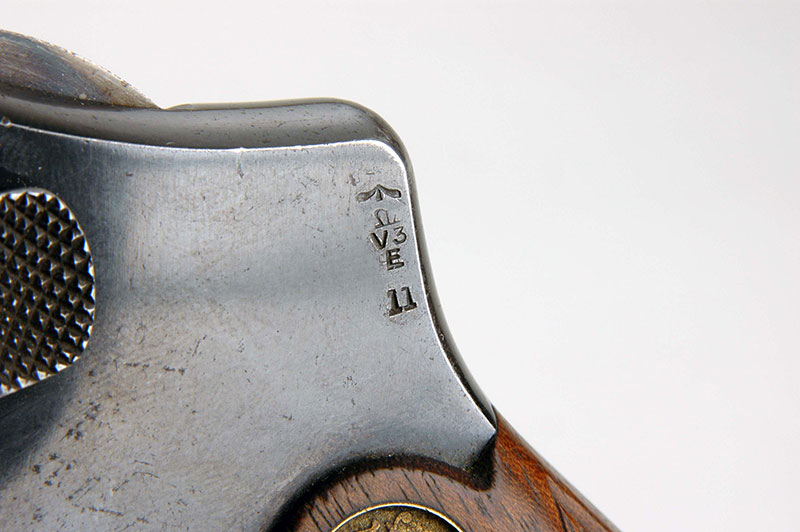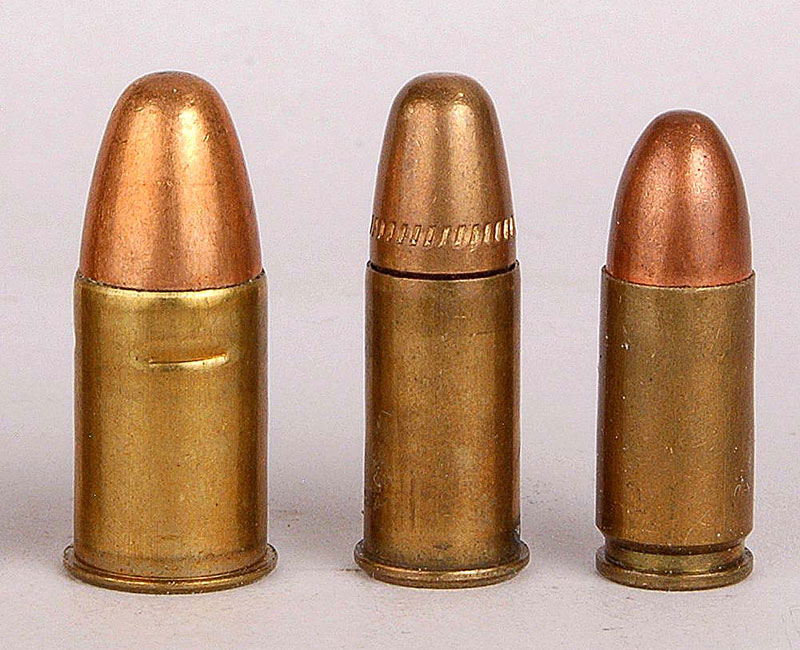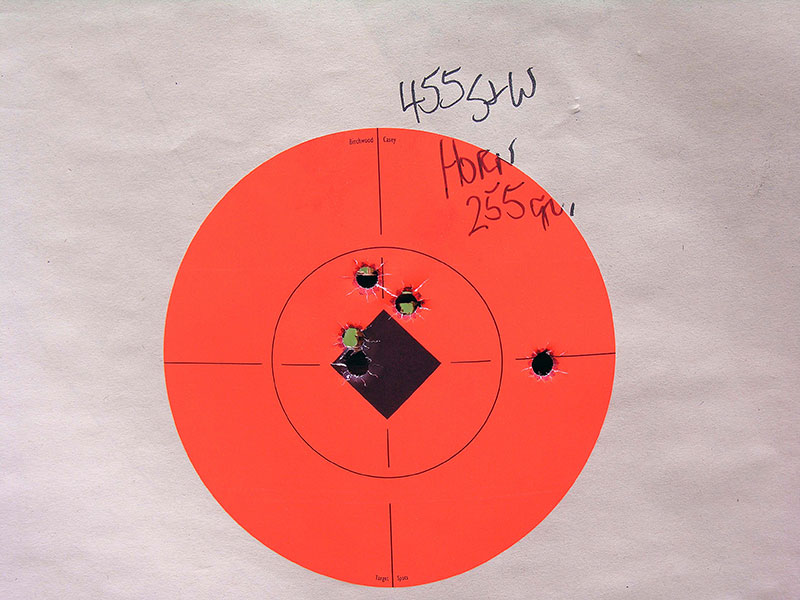Handguns Of WWII, Part 6
The Smith & Wesson Hand Ejector, 2nd Model .455 Webley
Part 6 Of A 13-Part Series
When Britain jumped into World War I and dragged Canada along, as usual their military outfits were woefully short of weapons. In those days the United States was a firearms manufacturing colossus, so Britain turned to various American arms factories for weapons. First was Smith & Wesson for revolvers. As early as 1887, Britain’s military handgun cartridge was the .455 Webley. By the outbreak of hostilities in 1914, smokeless powder had replaced black powder in that .76″ long case. Bullet weight was a hefty 265 grains, its shape was a rather odd conical roundnose and velocity was rated at only 580 fps. This was their Mark II cartridge (Source Military Small Arms Of The 20th Century, 7th Edition).
In 1907 Smith & Wesson introduced their first swing cylinder, large frame revolver. It was at first named the New Century, but collectors have come to term it the Hand Ejector, 1st Model. Most writers in the gun magazine business usually call it a “Triplelock.” Its introductory chambering was .44 Smith & Wesson Special, but before it was dropped, circa 1915, some were also made as .45 Colt, .44-40 and .38-40. To accommodate the British it was a simple matter for S&W engineers to alter “Triplelocks” to .455 Webley.
Although the Brits bought nearly 5,500 of the S&W .455s, they were not completely pleased with them. The Triplelock’s ejector rod housing was encased in a shroud on its right side. There was also a lock between the cylinder crane and frame that inspired its unique nickname. The Brits rightly feared the mud of trench warfare would gum up such intricate mechanisms
2nd. Model
Therefore, in 1915 Smith & Wesson redesigned their big frame revolver, dropping both of the above-mentioned features. They offered this “2nd Model” for domestic sales in the four American calibers, and of course sold many thousands more to the British military in .455 Webley. These were all of a type. Barrels were 6 ½” long, weight was a fairly heavy three pounds, grips were two piece, finely checkered walnut and there was a lanyard ring on the butt. Finish was still Smith & Wesson’s elegant bright blue throughout, with hammer and trigger color case hardened. Sights were a simple groove down the frame’s topstrap with a large half-moon shaped front sight forged integral with the barrel. Before manufacture ceased in September, 1916, Smith & Wesson supplied just shy of 70,000 more .455 revolvers to the British. Here’s an interesting fact. All these handguns were sent to Remington/Union Metallic Cartridge Company’s New York office because that firm was Britain’s purchasing agent in the United States. From there they were forwarded either to Britain or to Canada.
To the government of Canada is where the S&W Hand Ejector, 2nd Model, .455 in my collection went in 1916. It received its proof marks and then disappeared into the maw of history. So how does all this pertain to World War II handguns? Many of these handguns stayed in the armories of their respective military purchasers and were pulled out for reissue in World War II. Somewhere along the way, my S&W .455 also gained an Australian-made military holster, complete with brass cleaning rod.

These are some of the .455 Webley loads Duke has been feeding his Smith & Wesson over the years.
From left: Fiocchi factory load with 262
grain lead bullet, Hornady factory load with 265 grain lead bullet,
Hornady 255 grain lead bullet and loaded round, and cast bullet from RCBS
special order mould #455-265WEBLEY and loaded round.
A New Load
Also that Mark II .455 loading was changed. It originally carried a lead alloy bullet which was against conventions of civilized warfare. The Mark VI loading replaced it with a 265 grain full metal jacketed bullet rated at 620 fps. At a gun show a few years back I encountered a British Webley Mark VI revolver accompanied by a 12-round box of the .455 Mark VI loads of Canadian manufacture dated 1943. I bought that Webley just to get that box of ammo to go with my Canadian-issued Smith & Wesson Hand Ejector 2nd Model .455!
When first introduced to shooting and then handloading .455 Webley, matters were slightly inconvenient. The only factory ammo came from Fiocchi of Italy and it was not commonly encountered. It chronographed 660 fps from the big S&W.
Other than the cases one could gather from shooting Fiocchi factory loads only brass cut and formed from .45 Colt cases was available to the reloader. Dies were easy, as both RCBS and Redding offer them, and to my great surprise RCBS even catalogs a .455 Webley bullet mould in their special order section. It is numbered 455-265-Webley and its design is conical, as with military bullets, and even hollowbase, as they were. Cast of 1/20 alloy they worked just fine when fired with 3.4 grains of Bullseye. Velocity as chronographed from my S&W was 616 fps about six feet from the muzzle.
Then things got easier. Hornady began offering .455 Webley factory loads and also cases for reloading. Also I gave Hornady’s 255-grain swaged lead .454″ bullets — ostensibly meant for .45 Colt cowboy action shooters — a try, in place of the RCBS bullets. They shot beautifully over 4 grains of Bullseye, giving a velocity of 714 fps. Although the RCBS cast bullets “look” better in my handloads, being hollow-based, they must be poured one at a time, so production is very slow. Also, the 255-grain Hornady swaged lead bullets printed exactly to point of aim when fired two-handed, standing at 50 feet distance.
Smith & Wesson helped in American efforts to pull Britain’s fat out of the fire in two world wars. They began with these big N-frame .455s. Then Smith & Wesson chimed in again starting circa 1940 with their K-frame .38 “Military & Police” revolvers.
Click here to links to all the 13-part on-line series of Handguns Of World War 2 articles.









